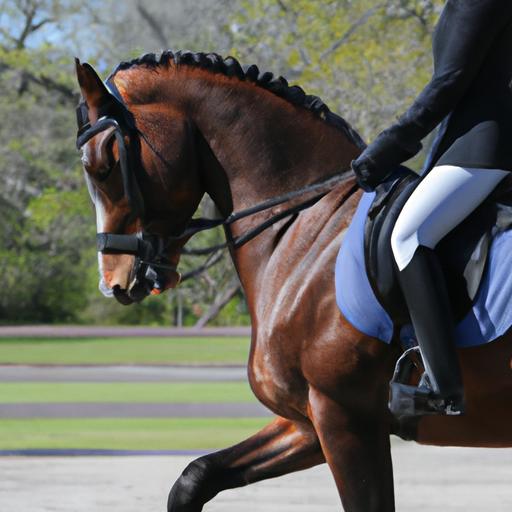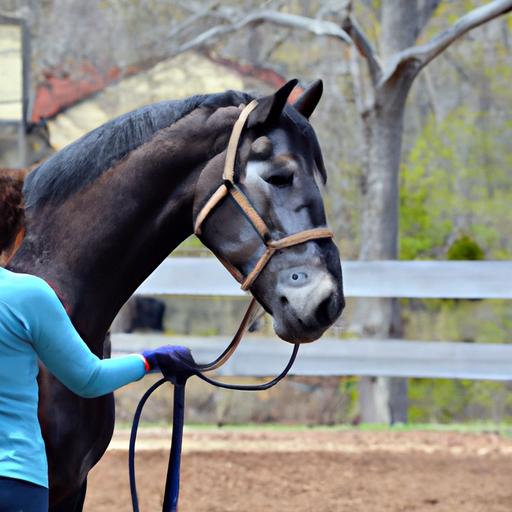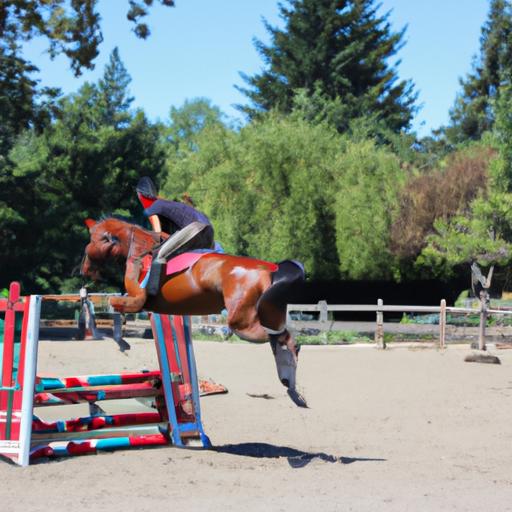Unleash the potential of your equine partner with sunny days horse training. Discover the benefits and techniques to optimize training under the warm sun.
Introduction

Have you ever wondered why sunny days are considered ideal for horse training? Training horses in the warmth of the sun not only offers a pleasant experience but also brings forth a multitude of benefits. As an equestrian enthusiast, you’ll be thrilled to explore the advantages of utilizing sunny weather to enhance your horse’s training sessions. In this article, we will delve into the significance of training horses in sunny weather and uncover the remarkable benefits it offers.
Importance of Training Horses in Sunny Weather
When it comes to horse training, the weather plays a pivotal role. Sunny days provide the perfect environment for honing your equine companion’s skills. The gentle warmth of the sun relaxes the muscles, making them more receptive to training techniques. The abundance of natural light elevates mood and fosters a positive ambiance, enhancing the overall training experience for both horse and rider.
Benefits of Sunny Days for Horse Training
-
Vitamin D Boost: Just like humans, horses need vitamin D for optimal health. Sunny weather allows horses to soak up the sun’s rays, promoting the synthesis of vitamin D, which aids in calcium absorption and maintains strong bones and muscles.
-
Improved Endurance: The warm weather stimulates blood circulation, increasing oxygen delivery to the muscles. This heightened blood flow enhances the horse’s endurance, enabling them to perform at their peak during training sessions.
-
Enhanced Mental Focus: Sunlight triggers the release of serotonin, a neurotransmitter responsible for regulating mood and promoting mental clarity. By training in sunny weather, you provide your horse with an environment that cultivates focus and attentiveness.
-
Natural Drainage: Sunny days often accompany dry weather, facilitating natural drainage of the training area. This ensures a safe and stable footing for your horse, reducing the risk of slips and injuries.
By harnessing the power of sunny days, you can optimize your horse’s training sessions and unlock their true potential. In the upcoming sections, we will explore the intricacies of training horses under the radiance of the sun, from selecting suitable training areas to implementing effective techniques. So, saddle up and let’s dive into the world of sunny days horse training!
Stay tuned for the next section, where we will discuss how to understand sunny weather for horse training. Remember, the sun is not only a celestial ball of fire but a catalyst for equine excellence.
Understanding Sunny Weather for Horse Training

Ideal Temperature and Weather Conditions
When it comes to training horses in sunny weather, it’s crucial to understand the ideal temperature and weather conditions. Horses thrive in temperatures between 60°F and 80°F (15°C-27°C), as this range promotes optimal performance and minimizes the risk of heat-related stress. However, be mindful of extreme heat, as temperatures above 90°F (32°C) can be detrimental to your horse’s well-being.
Considerations for Different Seasons
Sunny weather varies throughout the seasons, and it’s essential to adapt your training approach accordingly. In spring and summer, take advantage of the longer daylight hours and plan your training sessions during the cooler parts of the day, such as early morning or late afternoon. In fall and winter, be mindful of temperature drops and potential frost, which can create slippery conditions. Adjust your training schedule accordingly, and consider using indoor arenas or well-drained areas during inclement weather.
Safety Precautions for Training in the Sun
While sunny days offer numerous benefits, it’s crucial to prioritize the safety and well-being of both you and your horse. Here are some key safety precautions to keep in mind:
Hydration Management:
Ensure your horse has access to fresh, clean water at all times, especially during training sessions in the sun. Hydration is essential to prevent heat exhaustion and dehydration.
Sun Protection:
Just like humans, horses can be vulnerable to the sun’s harmful rays. Apply sunscreen on sensitive areas such as the muzzle, ears, and any exposed pink skin to protect your horse from sunburn. Additionally, consider using fly masks and lightweight, breathable sheets to shield them from both UV rays and pesky insects.
Gradual Acclimation:
If your horse isn’t accustomed to training in sunny weather, gradually introduce them to longer periods of sun exposure to allow their body to adapt. Start with shorter sessions and gradually increase the duration over time.
Cool-Down Periods:
After intense training sessions, incorporate proper cool-down periods to allow your horse’s body temperature to return to normal gradually. This can be achieved through light exercise, walking, or hand-grazing.
By understanding the nuances of training horses in sunny weather, you can ensure a safe and productive training experience. Now that we’ve covered the importance of understanding sunny weather, let’s move on to the next section, where we’ll explore how to select suitable training areas for sunny days. Remember, safety and awareness are key to unlocking your horse’s true potential under the sun!
Selecting Suitable Training Areas for Sunny Days

A. Choosing Open and Shaded Spaces
When training horses on sunny days, it is crucial to select training areas that strike a balance between openness and shade. While horses benefit from the warmth and natural light, excessive exposure to direct sunlight for prolonged periods can cause heat stress and exhaustion. Look for training spaces that offer a mix of open areas where the sun can energize your horse and shaded spots where they can find respite from the intensity of the sun’s rays. This way, you provide your equine partner with the best of both worlds, ensuring their comfort and well-being during training sessions.
B. Evaluating Ground Conditions and Footing
The condition of the ground and footing in your chosen training area greatly influences the safety and effectiveness of your horse’s training. Assess the ground for its firmness, ensuring it is neither too hard nor too soft. Hard ground can be harsh on your horse’s joints, while overly soft ground may cause instability and increase the risk of slips. Additionally, check for any irregularities or obstacles that could pose a danger to your horse’s movements. Smooth and even footing provides a stable base for training and minimizes the likelihood of injuries.
C. Avoiding Potential Hazards in the Training Area
Before commencing your training sessions, it is essential to identify and eliminate potential hazards in the training area. Take a thorough look around, removing any sharp objects, debris, or toxic plants that could harm your horse. Ensure that fences, gates, and other structures are secure and in good condition. By creating a safe environment, you can focus on training your horse without unnecessary distractions or risks. Remember, the key to successful training is a harmonious blend of safety and engagement.
By following these guidelines when selecting your training areas, you create an environment that optimizes your horse’s performance and well-being under the sunny skies. In the next section, we will explore how to properly condition and nourish your equine companion during sunny days to ensure they thrive during training sessions. So, let’s forge ahead on this radiant journey of horse training excellence!
Stay tuned for the next section, where we will uncover the secrets to proper conditioning and nutrition for horses in sunny weather. Remember, a well-considered training area is the foundation for a successful training regime.
Proper Conditioning and Nutrition for Horses in Sunny Days
A. Hydration Management during Training Sessions
When training horses on sunny days, it is vital to prioritize proper hydration to prevent dehydration and promote optimal performance. As the sun’s rays beat down, horses lose substantial amounts of water through sweat. To ensure your equine partner stays hydrated, follow these essential tips:
-
Water Availability: Always provide access to fresh, clean water before, during, and after training sessions. Horses should be able to drink freely to replenish lost fluids.
-
Frequent Water Breaks: Incorporate regular water breaks into your training routine. Encourage your horse to drink by offering water between exercises or during rest periods. This will help maintain their hydration levels throughout the session.
-
Electrolyte Supplementation: Consider adding electrolyte supplements to your horse’s diet. Electrolytes help replace essential minerals lost through sweat and aid in maintaining proper fluid balance within the body.
B. Providing Adequate Nutrition for Energy and Endurance
Training horses under the sun demands an increased need for energy and endurance. Proper nutrition is key to meeting these requirements. Follow these guidelines to ensure your horse receives the necessary nutrients:
-
Balanced Diet: Provide a well-balanced diet consisting of high-quality forage, such as hay or pasture, along with appropriate amounts of grain or concentrate feed. This will supply the energy needed for rigorous training sessions.
-
Supplementing with Fat: Including fat supplements in your horse’s diet can provide additional energy without excessive grain intake. Fats are a dense energy source and can help fuel your horse’s performance in sunny conditions.
-
Consulting a Nutritionist: For personalized nutrition advice, consult with an equine nutritionist who can assess your horse’s specific needs based on their training intensity, body condition, and other factors. They can recommend the best diet plan to optimize your horse’s performance under the sun.
C. Preventing Heat-Related Health Issues in Horses
Excessive heat can pose health risks to horses, including heat stress, heat exhaustion, and even heatstroke. To safeguard your horse’s well-being during sunny training sessions, consider the following precautions:
-
Timely Scheduling: Plan training sessions during cooler parts of the day, such as early morning or late evening, to avoid the peak heat. This reduces the risk of heat-related issues for your horse.
-
Shade Availability: Ensure your training area has shaded spots where your horse can take breaks and seek relief from direct sunlight. This helps prevent overheating and allows them to rest in a cooler environment.
-
Monitoring Vital Signs: Regularly check your horse’s vital signs, including temperature, heart rate, and respiratory rate, to detect any signs of heat stress. If you notice abnormal readings, provide immediate rest and access to water.
By implementing proper conditioning and nutrition strategies, you will equip your horse with the physical strength and endurance needed to thrive in sunny weather. In the next section, we will explore effective training techniques specifically tailored for sunny days. So, let’s continue our journey towards maximizing the potential of sunny days for horse training!
Effective Training Techniques for Sunny Days
As the sun’s rays illuminate the training arena, it’s time to dive into the realm of effective training techniques specifically tailored for sunny days. By incorporating these techniques into your horse’s training regimen, you can maximize their potential and create an enriching experience for both you and your equine partner.
A. Warm-up Exercises and Stretches
Before delving into rigorous training, it’s vital to prepare your horse’s muscles and joints through warm-up exercises and stretches. Begin with gentle walking exercises to gradually increase their heart rate and warm up their muscles. Incorporate lateral movements, such as leg yielding and shoulder-in, to engage and stretch their muscles. By incorporating these warm-up exercises, you’ll enhance your horse’s flexibility, prevent injuries, and set the stage for a productive training session.
B. Incorporating Obstacle Courses and Trail Rides
To add an element of excitement and challenge to your sunny day training sessions, consider setting up obstacle courses. Incorporate various obstacles such as poles, jumps, and barrels to test your horse’s agility, coordination, and obedience. These courses not only provide mental stimulation but also improve your horse’s balance and responsiveness.
Additionally, take advantage of the sunny weather by embarking on trail rides. Explore new terrains, encounter different sights and sounds, and expose your horse to diverse environments. Trail rides offer a refreshing change of scenery, promote confidence, and help develop your horse’s adaptability and trust in you as their rider.
C. Utilizing Natural Elements to Enhance Training
Nature offers a plethora of tools and resources that can be utilized to enhance your horse’s training on sunny days. Make use of natural elements such as hills, inclines, and uneven terrains to engage your horse’s muscles and improve their balance and coordination. Incorporate exercises that involve walking or trotting uphill and downhill, which not only strengthen their muscles but also develop their proprioception and body awareness.
Furthermore, take advantage of natural water sources such as rivers or ponds. Introduce your horse to water crossings, gradually building their confidence and trust in navigating through different water obstacles. This not only adds an element of fun but also enhances their versatility and adaptability.
By incorporating these effective training techniques into your sunny day sessions, you’ll create a dynamic and engaging experience for your horse. Stay tuned for the upcoming section, where we will explore ways to maximize the benefits of sunny days for horse training. Remember, with the right techniques and a touch of creativity, sunny days can become transformative moments in your equine journey.


